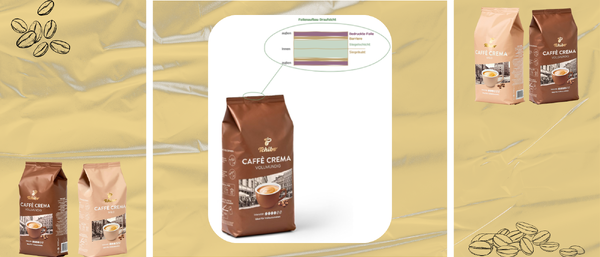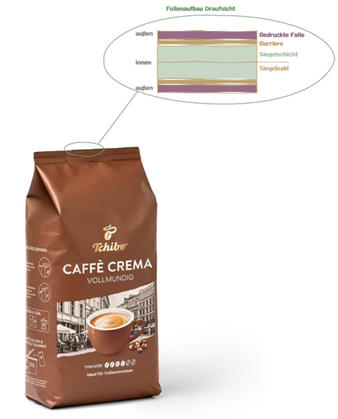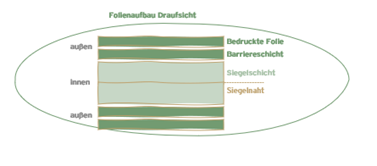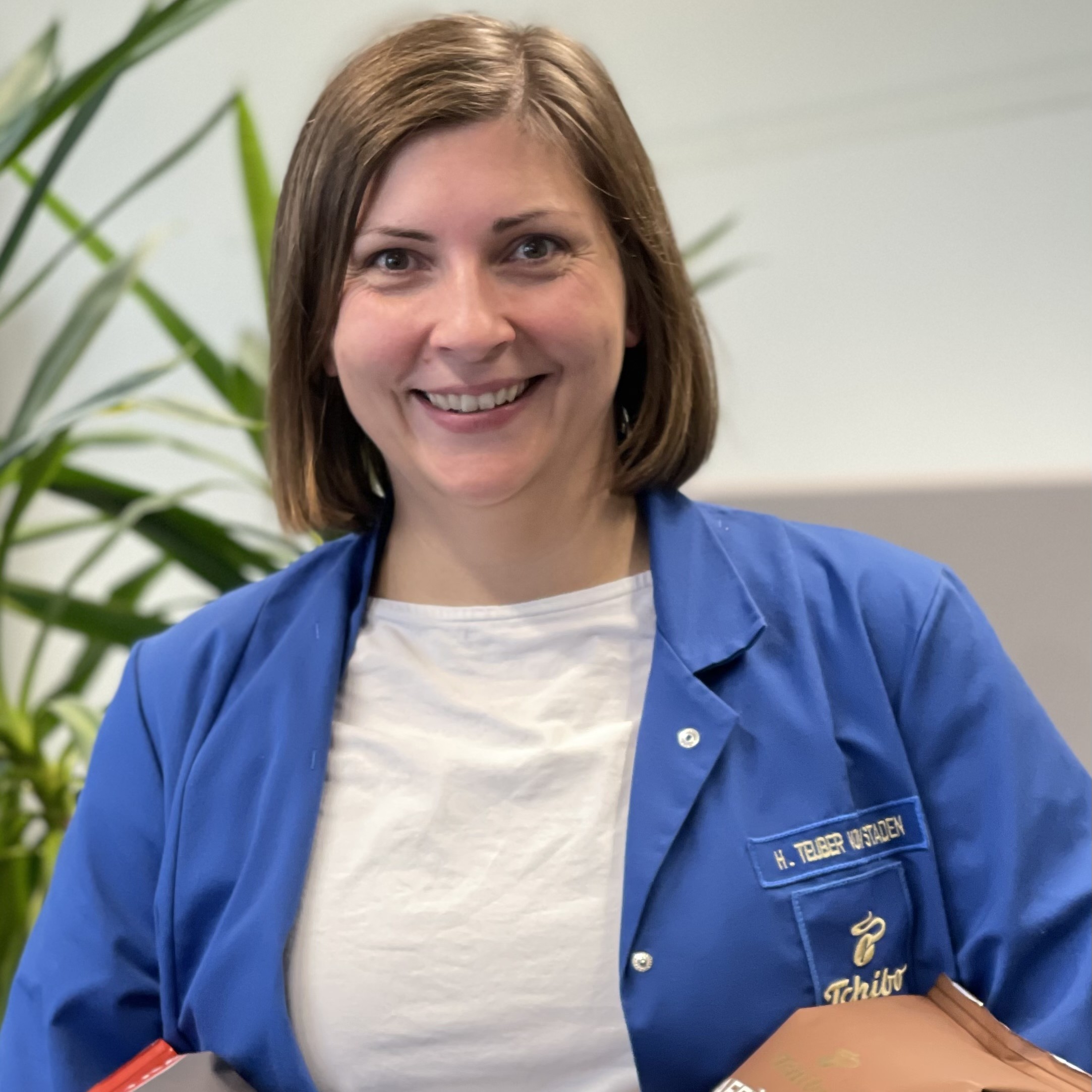
How do you build recyclable foil?
Hello, my name is Helena and I have been working enthusiastically on a wide variety of coffee packaging at Tchibo for 8 years. In the #Tchibopacktaus series, we want to take you with us and explain how our packaging works, why we need to work on it and where the challenges lie. Today we start with the switch to recyclable films. If you have any specific questions about our packaging, we will be happy to answer them too.
Let's go and unpack:
The packaging industry is currently undergoing a disruptive change with the requirement for packaging to be recyclable. In theory, of course, this requirement has been in place for some time, but now it will (finally) be mandatory for everyone from 2030. And in theory, there are also recyclable packaging solutions - but what is so difficult about making coffee packaging recyclable?
A functional sandwich principle has always been used in packaging development:
- Layer 1: The packaging should be printed à Choose a film layer that is easy to print on, highly transparent and rigid enough to withstand high speeds.
- Layer 2: The coffee must be well protected, especially from oxygen and water vapour à We add a barrier layer. Metallic layers are best suited for this.
- Layer 3: A flexible coffee packaging (bag) must of course be tight, otherwise the best oxygen barrier is useless à a good sealing layer is needed to "glue" the inner sides of the bag well.

This layer structure is functional and has proven itself over the last few decades. Filling systems and best-before dates are designed for this. However, the disadvantage of this composite is that it cannot be recycled in existing sorting plants (with the established state of the art). Recycling works best when the source materials can be sorted by type. We have combined layers of different materials here that our plants cannot simply separate and recycle. This composite ends up in the unpopular mixed plastics sorting fraction and is sent for thermal utilisation.
We therefore have to work on the basic structure of our packaging to bring it into a higher quality sorting fraction. We are focussing on polyolefins (polyethylene and polypropylene).

We try to utilise these materials for our functional layer structure. There are compromises in terms of printability and barrier compared to the "old" composite structure.
When sealing the bag, heat is usually conducted from the outside to the inside through all layers so that the sealing layer melts and bonds well. The advantage of the old bond is that the outer layers are much more heat-resistant than the sealing layer. This means that the heat introduced can pass through all layers to the sealing seam without causing any damage.
The new composite structure is somewhat more difficult, as the materials begin to melt in similar temperature windows. Precise and harmonised machine settings are required here, and in many cases, specific machine adjustments are also necessary to ensure that these packaging materials can run on the machines at all.
Another challenge for our filling systems is the resilience of the new material. This involves the ability of the film to return to its original shape after being deformed. The property of the metallic layer (to retain its shape) has been used to keep bags in shape during the filling process.
So we have conflicting requirements. Where it is better for recycling the fewer types of material we use, it is more difficult to do without individual properties in the area of functionality.
We are constantly working on the optimisation and further development of packaging materials and systems in order to find the best possible compromises for us.
